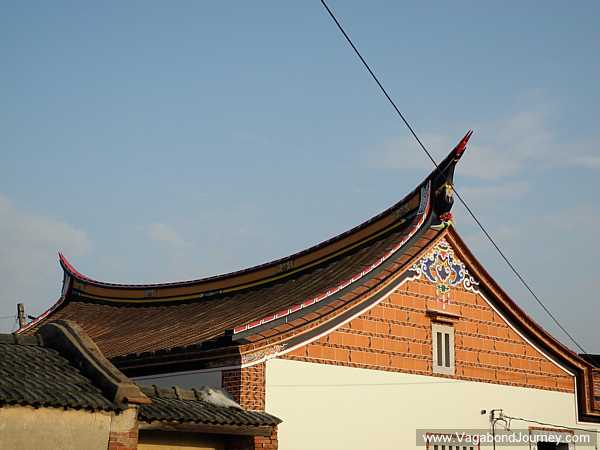Photos of swallowtail roofs, a traditional architectural feature in China’s Fujian province and Taiwan.
Swallowtail roofs 燕尾 are a very prominent part of the traditional Minnan architecture that originated in China’s Fujian province and Taiwan. This type of architectural decoration was dubbed “swallowtail” because it consists of ornate sickles that curl up into the air at the ends of a roof’s ridge which resembles — surprise — the tail of a swallow. The style was initially a sign of wealth and prosperity — reserved for temples, the homes of officials, scholars, and the wealthy — and the complexity of the roof’s “tail” was an indicator of the status of the person residing within, though later on the style was popularized. Today, swallowtail roofs can still be found on many older buildings in this region.
Many of the traditional houses and temples on Taiwan’s Kinmen Island — which is traditionally a Minnan area once a part of China’s Fujian province — are decked out with swallowtail roofs. The village of Shui Tou has many notable examples, and the first set of photos below were taken there.





The next set of photos show examples of swallowtail roofs on the temples and shrines in Jincheng, the main city of Kinmen.




Video of swallowtail roofs of Shuitou village
SUPPORT
The only way I can continue my travels and publishing this blog is by generous contributions from readers. If you can, please subscribe for just $5 per month:NEWSLETTER
About the Author: VBJ
I am the founder and editor of Vagabond Journey. I’ve been traveling the world since 1999, through 91 countries. I am the author of the book, Ghost Cities of China and have written for The Guardian, Forbes, Bloomberg, The Diplomat, the South China Morning Post, and other publications. VBJ has written 3706 posts on Vagabond Journey. Contact the author.
VBJ is currently in: New York City
Next post: You Have to Know That You Suck To Improve
Previous post: Kinmen: A Taiwanese Backwater or the Gateway to Mainland China?


